What Does Oolong Tea Taste Like
Oolong tea, your delicate yet complex beverage, straddles the line between green and black tea. It originates from the Camellia sinensis plant, the source of all true teas. Oolong undergoes partial oxidation, a process that shapes its unique character and places it somewhere between the unoxidized green teas and the fully oxidized black teas.
The oxidation level of oolong tea can vary significantly, from about 10% to 70%, which greatly influences its flavor profile. Your oolong's taste might be reminiscent of fresh flowers and fruit if it's less oxidized or, when more oxidized, it might pivot towards a warmer, caramel-like sensation.
Here's what contributes to oolong's distinct nature:
Bestsellers
- Partial Oxidation: Determines the specific taste
- Leaf Processing: Includes withering under strong sun and oxidation before curling and twisting
- Varieties: Range from light to full-bodied, sweet to toasty
When brewed, your oolong tea can be pale yellow, green, or a deeper amber color, depending on the oxidation level. During your tea experience, you'll notice oolong often has a more nuanced flavor and smoother finish compared to other tea types, an attribute that aficionados deeply appreciate.
Origins of Oolong Tea
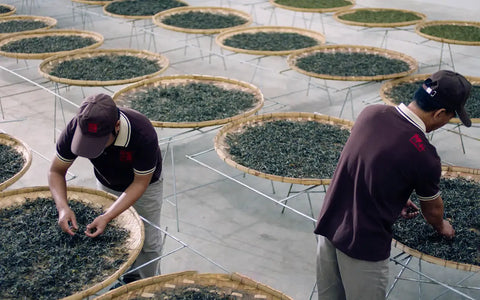
Oolong tea, a traditional Chinese tea, originates from several regions in China. Your journey into the origins of this tea starts in the Fujian province, specifically in the Wuyi Mountains, where some of the finest oolongs are produced. Another origin site is the Guangdong province, known for its Phoenix oolong teas.
During the Ming Dynasty, oolong tea began to gain prominence. The name "oolong" translates to "black dragon" in Chinese, referring to the long, dark, twisted leaves that characterize the tea. As you explore its beginnings, you'll find that oolong's unique process of oxidation and withering under the sun plays a crucial role in its development. This process falls between that of green and black teas, leading to its distinctive flavor.
Here's a brief timeline for reference:
- Ming Dynasty (14th–17th Century): The period when oolong tea's production methods were refined.
- 18th Century: Increased popularity and expansion of oolong tea cultivation to Taiwan, a place now renowned for high-quality oolong.
As with many teas, the exact details of oolong's origin are woven into legends. One such tale speaks of a tea gardener who was scared away by a serpent, only to return days later to find the tea oxidized and with improved flavor. Each region in China and Taiwan has developed its unique oolong tea characteristics – from the lightly oxidized Baozhong Tea to the heavily oxidized and roasted Da Hong Pao. Your understanding of oolong tea will deepen when you consider the geographical and historical contexts that have shaped its production.
Oolong Tea Flavor Profile
The flavor profile of oolong tea is diverse and ranges from floral to smoky, depending on the processing methods and the origin of the tea leaves. Here's a breakdown of the flavor complexities you might experience with oolong tea:
- Sweetness: Many oolong teas possess a natural sweetness, reminiscent of ripe fruits or honey.
- Floral Notes: Oolong teas, especially those lightly oxidized, often have a floral character, hinting at orchid, jasmine, or gardenia.
- Fruity: You may taste notes of stone fruits, such as peaches, or tropical fruits in medium-oxidized oolongs.
- Toasty: Heavier oxidized oolongs can offer a toasty or nutty flavor, contributing to the tea’s complexity.
- Creaminess: Some oolongs have a smooth, creamy texture, often referred to as "milky".
- Vegetal: Lightly oxidized oolongs hold green, vegetal notes similar to fresh greens or steamed vegetables.
Texture is also an important aspect of an oolong's flavor profile, with many oolongs having a silky or buttery mouthfeel.
Here is a simple table to help you associate common oolong tea types with their typical flavor profiles:
| Oolong Variety | Oxidation Level | Common Flavors |
|---|---|---|
| Tieguanyin | Light | Floral, Sweet, Vegetal |
| Da Hong Pao | Medium to Heavy | Toasty, Spicy, Earthy |
| Milk Oolong | Light to Medium | Milky, Creamy, Sweet |
When you taste oolong tea, take a moment to note the initial flavors, the mid-palate sensations, and the aftertaste, as well as any evolution of the flavor as the tea cools. The complexity and nuanced nature of oolong tea can provide a rewarding experience for your palate.
Processing and Its Impact on Flavor
When you drink oolong tea, you experience a complex flavor profile that is a direct result of its unique processing. Oolong teas are partially oxidized, which places them between green tea (unoxidized) and black tea (fully oxidized). The degree of oxidation can significantly alter your cup's taste:
- Light Oxidation (10-40%): Your tea will have more floral and fresh attributes, akin to green tea, but with a richer body.
- Medium Oxidation (40-70%): Expect a balanced blend of fruity and woody flavors, with a slightly heavier texture.
- High Oxidation (70-90%): You'll notice stronger roasted flavors with hints of ripe fruits and a thick, creamy texture.
Moreover, the wilting process, where leaves are left to wither, reduces the grassy tones in the leaves and increases sweetness. The rolling of the leaves then breaks down the cells, releasing oils and enzymes that add to the tea's aroma and taste. Lastly, the level of roasting brings out different notes:
Lao Ban Zhang
| Roasting Level | Flavor Notes |
|---|---|
| Light | Delicate, slightly toasted, floral |
| Medium | Warm, caramel-like, more pronounced |
| Heavy | Robust, smoky, with hints of chocolate |
Remember that the environment where the tea is grown, including soil composition, altitude, and climate, also affects flavor. However, these processing steps are crucial in defining the taste and personality of your oolong tea.
Varieties of Oolong Tea
Oolong tea, known for its diverse flavors, is primarily produced in China and Taiwan, with each region offering its distinct taste profiles due to differences in production techniques.
Chinese Oolong
In China, Oolong tea is typically darker and stronger compared to its Taiwanese counterpart. Wuyi Rock: grown in the Wuyi Mountains, offers a complex, mineral-rich flavor. Tieguanyin: from Anxi in Fujian province is known for its floral aroma and a slightly sweet aftertaste.
-
Wuyi Rock:
- Flavor: complex, smoky, with a hint of stone fruit
- Aroma: rich with mineral notes
-
Tieguanyin:
- Flavor: bursts of floral sweetness, enduring taste
- Aroma: distinctively fresh and fragrant
Taiwanese Oolong
Taiwanese Oolong generally has a lighter taste with a more fragrant bouquet. Baozhong: This oolong has a light body with a floral scent, often described as orchid-like. High Mountain: grown at high altitudes, it is prized for its crisp taste and creamy texture.
-
Baozhong:
- Flavor: delicate and lightly sweet
- Aroma: floral, resembling orchids
-
High Mountain (Gaoshan):
- Flavor: fresh and clean with a subtle sweetness
- Aroma: smooth, with creamy or buttery notes
Brewing Techniques and Taste
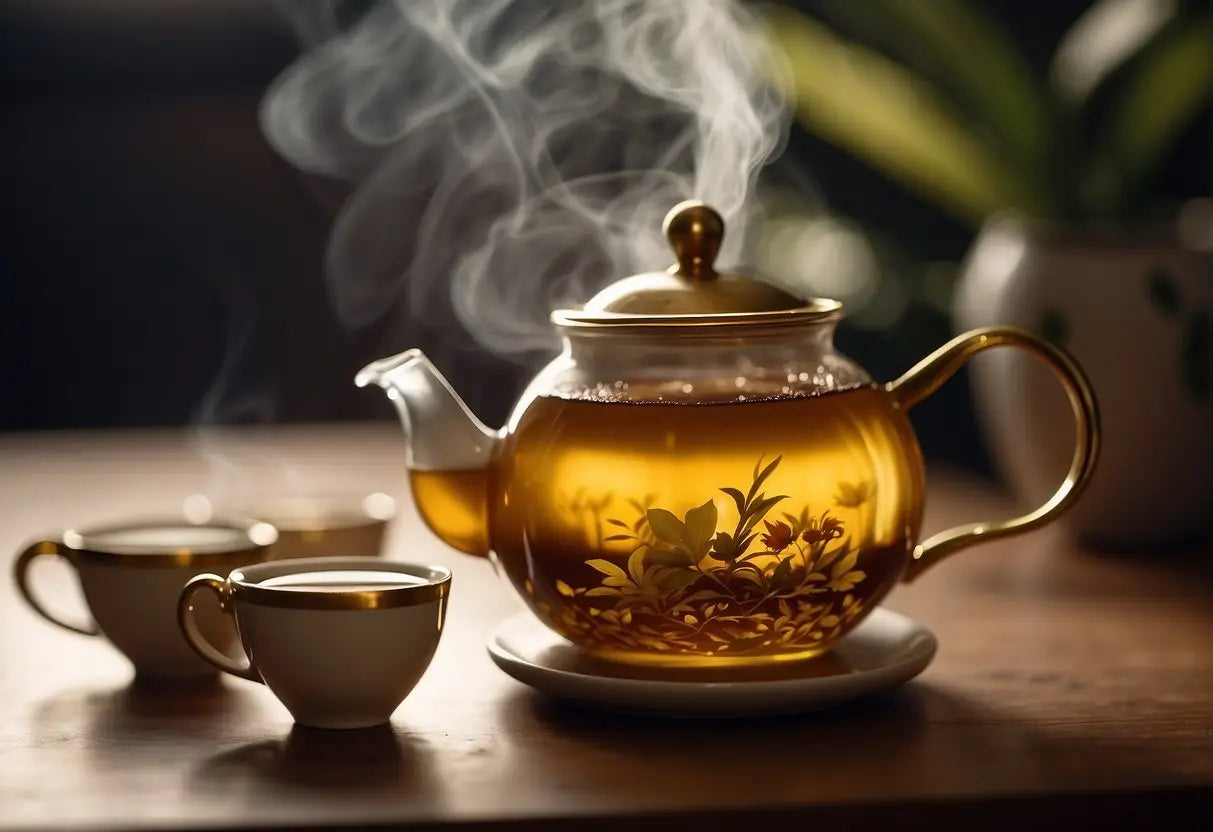
When brewing oolong tea, precision is essential. Begin with filtered water, heated to 185-205°F. The temperature varies with the tea's oxidation level; lighter oolongs tend towards the lower end, while darker ones prefer higher temperatures. Measure 1-1.5 teaspoons of oolong tea per 8 ounces of water.
Steeping Times:
- Light Oolong: 2-3 minutes
- Dark Oolong: 3-5 minutes
A proper steeping time ensures a balanced flavor, preventing bitterness. Multiple infusions are possible, with each revealing different flavor notes.
Taste Profile:
Oolong tea offers a complex spectrum of flavors, ranging from floral and fruity to creamy and woody. Light oolongs may remind you of fresh flowers or stone fruits, while darker oolongs can have hints of honey, roasted grains, or chocolate.
| Oxidation Level | Typical Flavors |
|---|---|
| Light | Floral, Peach, Creamy |
| Medium | Toasted, Nutty, Smooth |
| Dark | Woody, Honey, Rich |
Clarity, body, and aftertaste are influenced by the brew. A correctly brewed oolong should have a clear appearance and a smooth body, with a pleasant aftertaste that lingers. The use of high-quality leaves and the correct technique will result in a delightful cup of oolong tea that reflects its character. Remember, your individual preference is key; feel free to adjust the brewing parameters to suit your taste.
Oolong Tea Aroma Characteristics
When you first experience the aroma of oolong tea, you'll notice a complex fragrance that varies greatly depending on the level of oxidation and the particular processing methods used. Oolong teas can range from light to full-bodied, and their scents can span from delicate floral notes to richer, roasted tones. Here's a breakdown of what you might identify in the aroma:
-
Floral and Sweet: Lightly oxidized oolongs often exude a bouquet that includes scents reminiscent of orchids, gardenias, and other fresh flowers. You might also detect a subtle sweetness, similar to honey.
-
Fruity: Some oolongs carry a fruity essence, giving off aromas that can range from peach to apple, depending on the specific leaves and where they were grown.
-
Toasty and Woody: More heavily oxidized oolongs tend to have a toastier, sometimes woody aroma. You may also notice hints of caramel, nuts, or something evocative of a crackling fire.
-
Creamy and Buttery: A unique trait of certain oolong teas is a creamy, almost buttery smell, enriching the overall sensory experience.
Note: Brewing temperature and time can greatly influence these aromatic characteristics.
Here's a simplified guide to help understand the scent profile based on oxidation levels:
| Oxidation Level | Aroma Characteristics |
|---|---|
| Light | Floral, fresh, sweet |
| Medium | Balanced, fruity, complex |
| Dark | Toasty, woody, caramel |
Inhaling the aroma of your oolong tea is an essential part of the tasting process. Take a moment to savor the fragrance before each sip, allowing your senses to absorb the intricate properties of this cherished beverage.
Flavor Complexity of Oolong Tea
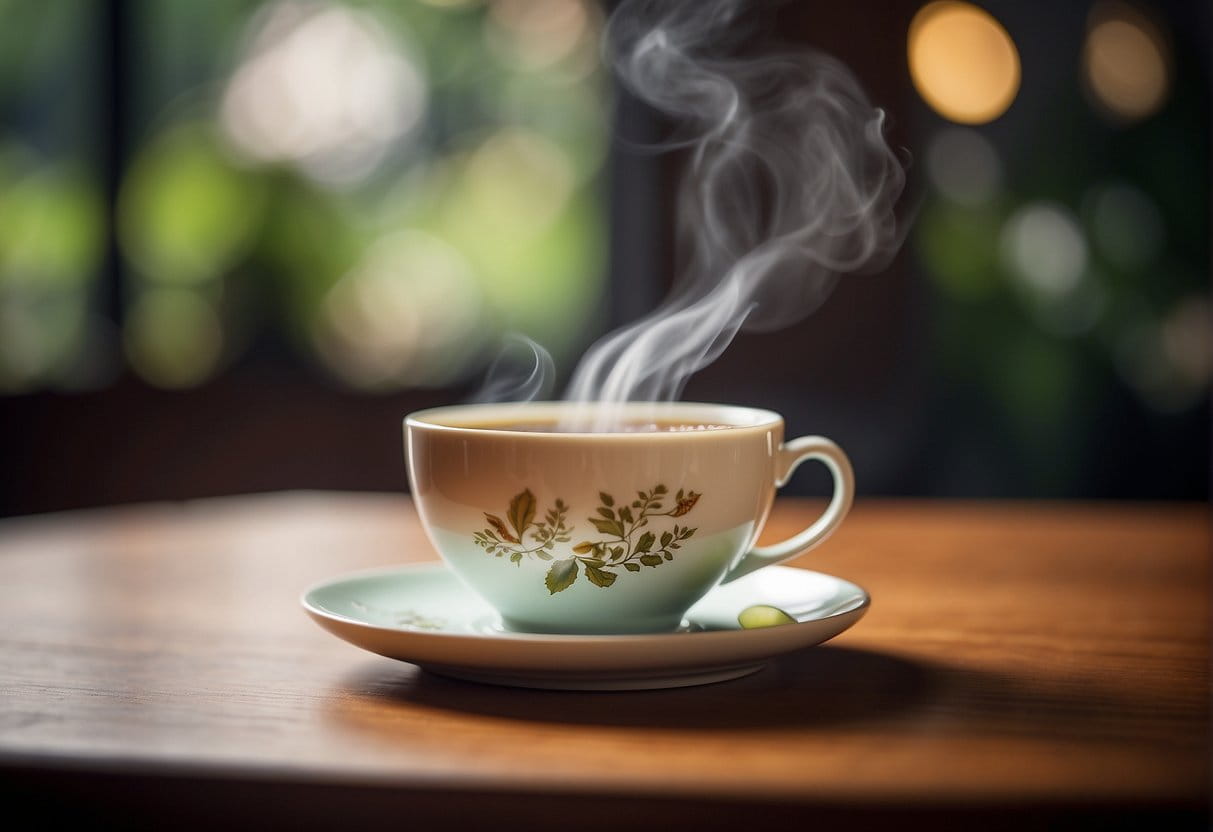
Oolong tea presents a unique spectrum of flavors, varying from floral to fruity, or woodsy to creamy. This semi-fermented tea stands between green and black tea, combining qualities of both.
- Fermentation Level: The taste shifts depending on the degree of fermentation. Lightly oxidized oolongs often exhibit gentle floral notes, reminiscent of orchids or lilacs. More oxidized oolongs can evoke a darker, fruitier profile with hints of berries or peaches.
- Roasting: Roasting introduces a toasty warmness, bringing forth flavors like honey or roasted nuts.
- Terroir: The region and conditions where the tea grows also affect your cup. Taiwanese oolongs, for instance, are known for their crisp, clean taste.
| Degree of Oxidation | Typical Flavors |
|---|---|
| Light | Floral, green, fresh |
| Medium | Balanced, stone fruit, sweet |
| Heavy | Woody, honey, caramel-like, robust |
When brewing, pay attention to water temperature and steeping time. These factors can alter the subtleties in flavor:
- Greener Oolongs: 80-85°C with a steeping time of 2-3 minutes
- Darker Oolongs: 90-100°C with a longer steep time of 3-5 minutes
Your personal taste preferences should guide your exploration of oolong tea varieties. Experiment with different levels of oxidation and roasting to discover which nuances of this nuanced tea you enjoy most.
Oolong Tea Mouthfeel

When you sip oolong tea, you'll first notice its texture. Here's what to expect:
- Smoothness: Oolong tea is often described as silky or velvety, gliding over your palate with ease.
- Body: Depending on the oxidation level, the body can range from light and airy to full and robust.
Sensation on the Tongue:
- Creaminess: Some oolongs leave a creamy sensation, similar to milk.
- Dryness: A slight astringency can sometimes be detected, providing a clean finish.
Temperature and Steeping Time:
- Hotter tea can feel more thin, whereas cooler temperatures can enhance creaminess.
- Shorter steeping times preserve delicacy. Longer steeps can intensify thickness.
| Temperature | Sensation |
|---|---|
| Hotter | Thinner mouthfeel |
| Cooler | Creamier mouthfeel |
| Steeping Time | Impact on Mouthfeel |
|---|---|
| Shorter | Delicate, light |
| Longer | Full-bodied, pronounced |
Keep these variables in mind to tailor the mouthfeel of your oolong tea to your preferences.
Pairing Food with Oolong Tea
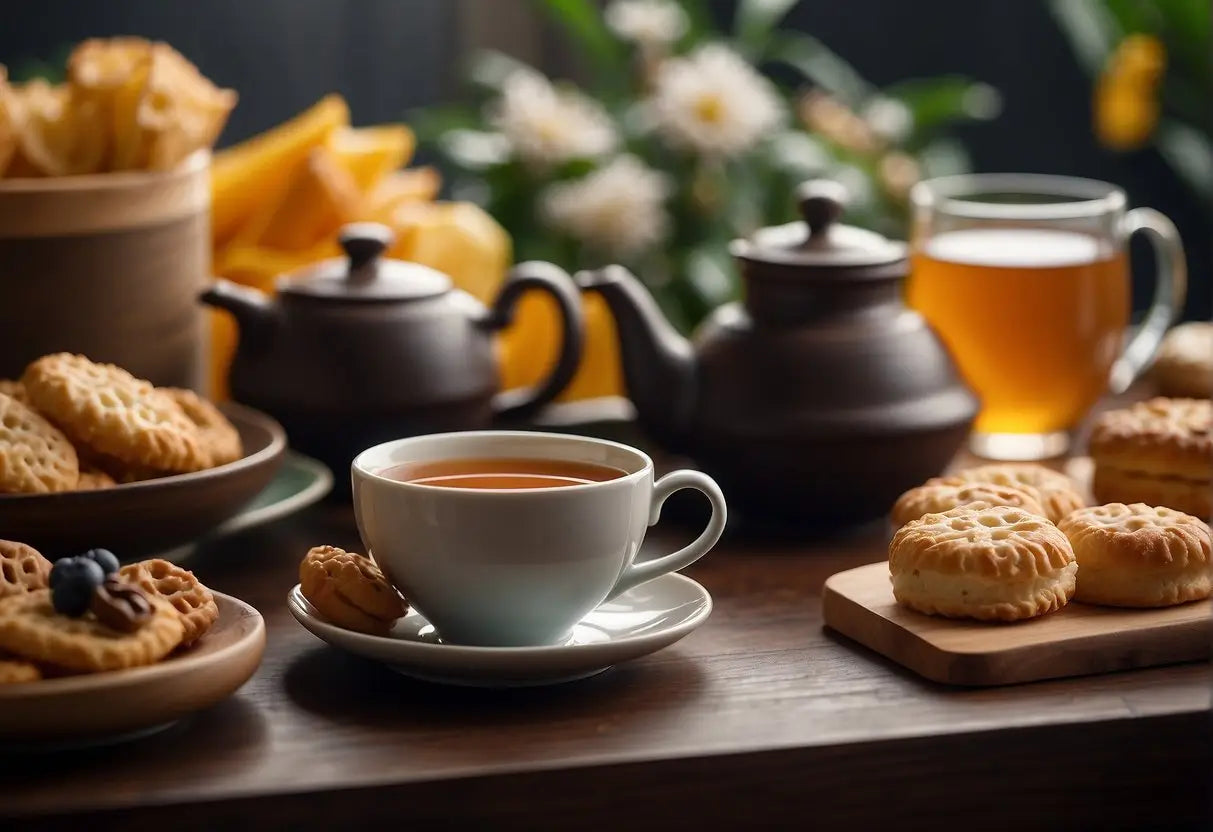
When you select foods to pair with your oolong tea, consider the intensity of the tea's flavor. Oolong teas can range from light and floral to dark and robust, so choose foods that complement these profiles.
-
Light Oolong Teas:
- Pair with light pastries or subtle desserts like scones or macarons.
- Complement with delicate white meats such as poached chicken.
- Serve alongside fresh seafood like scallops for a balanced palate.
-
Dark Oolong Teas:
- Pair with stronger flavored foods such as grilled meats or roast duck.
- Enhance with spicy dishes or rich stir-fries.
- Match with dark chocolate or desserts with a bolder taste.
Cheese Pairings:
- Gouda: A semi-hard cheese like gouda matches well with a medium-bodied oolong.
- Blue cheese: The intense flavors of blue cheese can be a good match for a darker, more oxidized oolong tea.
For an Afternoon Tea:
- Choose a variety of mini sandwiches and quiches.
- Serve light oolong with cucumber sandwiches.
- Pair dark oolong with egg salad or smoked salmon sandwiches.
Remember, the best food pairings with oolong tea should not overpower the tea but instead should highlight its complex notes and aromas. Think of the tea as an ingredient in your overall palate experience and choose foods that create harmony in your mouth.
Health Benefits Related to Taste
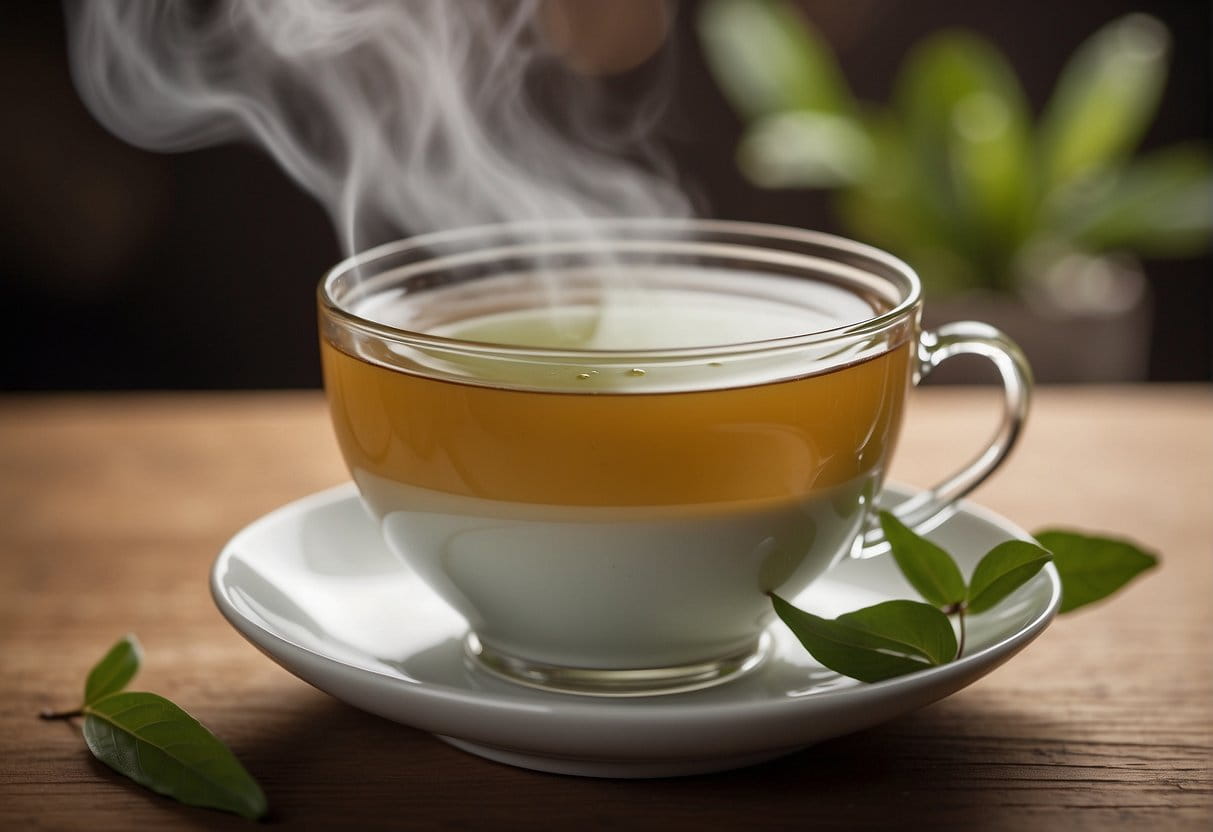
Oolong tea, with its rich flavor profile, may influence your perception of its health benefits. Your taste buds encounter a complex interplay of sweetness, bitterness, and floral notes, which can affect your enjoyment and perception of well-being when drinking this beverage.
The taste experience begins with the polyphenols, natural compounds in oolong tea that contribute to its distinctive flavors. These polyphenols, particularly catechins and thearubigins, are linked to several health benefits. For instance:
- Catechins: They provide a subtle astringency, which is associated with antioxidant properties that support cellular health and may reduce inflammation.
- Thearubigins: These add depth to the taste and are also connected with antioxidant benefits.
A brief encounter of amino acids in oolong tea affords a sweet, umami flavor. One key amino acid, L-theanine, is noted for promoting relaxation and improving mental focus, blending a positive sensory experience with potential cognitive benefits.
Furthermore, the slight floral and fruity aromas in oolong tea tend to enhance the overall experience, making the drinking process more enjoyable, which could indirectly motivate you to maintain a regular tea-drinking habit, potentially resulting in sustained health advantages.
Lastly, the caffeine content in oolong tea, milder than coffee but noticeable in flavor, can give a gentle energy boost without the strong bitterness found in other caffeinated beverages.
Remember, the enjoyment derived from the tea's taste may contribute to overall stress reduction and satisfaction, which are intangible yet significant aspects of health.
Storage and Aging of Oolong Tea
When storing oolong tea, your primary goals are preservation of flavor and prevention of spoilage. To achieve these goals, store your oolong tea in a cool, dark place, away from direct sunlight, odors, moisture, and heat sources.
Proper containers are crucial. Use airtight containers, preferably made of materials such as:
- Ceramic
- Metal
- Glass (opaque or tinted)
A critical point is to keep your oolong tea away from strong scents. The leaves can absorb nearby odors, which may alter their delicate flavor profile.
Aging oolong tea can enhance its depth and character if done correctly. While not all oolongs are suitable for aging, darker and more oxidized oolongs generally age better. They undergo a natural fermentation process that can improve their taste. However, this requires patience and proper conditions:
- Consistent, moderate humidity (around 60-70%)
- Stable temperature (around 20-22°C or 68-72°F)
- Regular monitoring
Rotating your tea supply ensures that all parts of the tea are exposed to these conditions evenly. Note that aging tea is not a universal improvement and some teas might lose flavor if aged improperly or for too long.
For a quick reference, here is a checklist for optimal storage:
- Store in a cool, dry, dark place
- Use an airtight container
- Avoid places with strong odors
- Maintain moderate humidity and stable temperature if aging tea
- Rotate your supply periodically during aging
Frequently Asked Questions
In this section, you will find specific insights into the tastes and characteristics that make oolong tea a unique beverage, and how it compares to other teas, such as green and jasmine teas.
How does oolong tea differ in flavor compared to green and jasmine teas?
Oolong tea offers a complex flavor profile that is typically fuller than the light, grassy taste of green tea and more varied compared to the fragrant, floral notes of jasmine tea.
What are the distinguishing taste characteristics of milk oolong tea?
Milk oolong tea is known for its creamy, smooth taste with a subtle hint of sweetness, reminiscent of milk, setting it apart from other oolong varieties.
Can you describe the range of flavors one might experience with different types of oolong tea?
Different types of oolong tea can present a spectrum of flavors from fruity and sweet to woody and roasted, with some having a floral undertone and others displaying a toasty essence.
Is there a notable difference in taste between lighter and darker oolong teas?
Lighter oolong teas tend to have a more delicate, floral flavor, whereas darker oolongs exhibit deeper, richer notes, often with roasted or chocolaty undertones.
What are the nuanced flavors that make oolong tea unique from other teas?
Oolong tea is recognized for its distinctive range of nuanced flavors, which can include stone fruit, honey, orchid, and even a slight minerality, depending on the tea's origin and processing.
How might the addition of flavors to oolong tea influence its traditional taste profile?
Adding flavors to oolong tea can complement or enhance its natural complexity, but it can also mask some of the subtle notes that are characteristic of traditional oolong tea.
← Older post Newer post →











